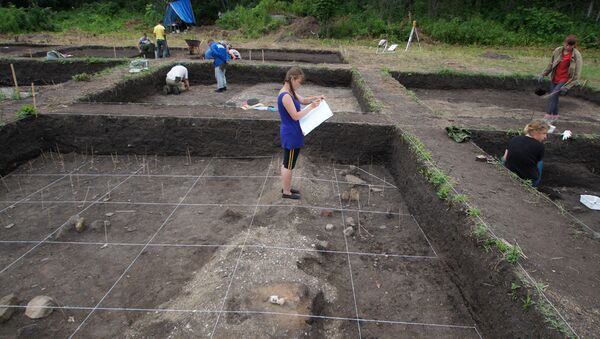An archaeological expedition by Denmark's Moesgaard Museum uncovered a human sacrifice site estimated to be approximately 2,000 years old, the Danish daily the Local reported.
The archaeologists have discovered objects including eight dog skeletons and one skeleton believed to be that of a young woman in her twenties. Other than the sacrifice site, the archaeologists discovered the remnants of a village with cobblestone paths and remnants of home foundations.
"At Skodstrup, we have the whole spectrum of an Iron Age community: A well-structured village with an associated burial ground and sacrificial bogs. It gives us a unique insight into the life of Iron Age people in war and in peace, and not least a glimpse into their religious universe," excavation director Per Mandrup said.
"We expected great things from the excavations because a settlement, a burial ground as well as extensive offerings and sacrifices in the bogs around Skodstrup have previously been found. However, these new discoveries more than live up to our expectations and the finding of a human skeleton is the crowning touch," Mandrup added.
Previous discoveries in a nearby swamp included a human sacrifice, weapons, burnt human bones and a wooden phallus.



